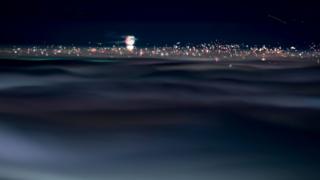 New Year’s Eve fireworks contributed to dangerously high levels of pollution in several German cities, official figures suggest.
New Year’s Eve fireworks contributed to dangerously high levels of pollution in several German cities, official figures suggest.
In Munich, particulate levels briefly reached 26 times the EU-recommended daily limit of 50 micrograms of particulates per cubic metre of air.
National figures suggest that firework displays ejected some 4,000 tonnes of particulates into the atmosphere.
That reportedly equates to 15% of yearly vehicle particulate emissions.
Airborne sooty particulates are mostly emitted during the burning of fossil fuels and contribute to deaths from respiratory illnesses.
The German figures have prompted calls for a ban on private fireworks parties.
The combustion of fireworks creates elevated levels of particles (smoke or soot) as well as high levels of metal ions such as magnesium. They have also been linked to increased levels of other molecules such as nitrogen dioxide (NO2) and sulphur dioxide (SO2).
Fireworks have been linked to elevated pollution levels elsewhere. In already smoggy Delhi, India, levels of tiny particulate matter (PM 2.5) more than doubled on 31 October last year, the day after Diwali celebrations.
In the worst affected areas, levels reached 750 micrograms per cubic metre — 30 times a mean guideline set by the World Health Organization (WHO) of 25 micrograms per cubic metre on average over a 24-hour period.
Diwali fireworks choke Delhi, angering Indians
India court bans fireworks in Delhi after Diwali smog
Air pollution ’causes 467,000 premature deaths a year in Europe’
Fireworks and bonfires marking the UK’s Guy Fawkes Night on 5 November have also been blamed for pollution spikes.
According to air pollution scientist Gary Fuller, writing in the Guardian newspaper , on Guy Fawkes Night in 2014 air pollution reached the top level of 10 on the UK scale across the West Midlands, Merseyside, Manchester and Yorkshire.
Germans spent €100m (£84.6m; $104m) on fireworks for New Year’s Eve displays according to official figures quoted by Munich daily Sueddeutsche ,
It says the emissions of PM10 — particulate matter 10 micrometres or less in diameter — reached levels many times higher than the recommended EU limit of 50 micrograms in many cities, including Frankfurt (385 micrograms), Wiesbaden (503 micrograms) and Baden-Wuerttemberg (534 micrograms) on 1 January 2017.
But the worst reading came from the centre of the southern city of Munich, where one reading briefly reached 1,346 micrograms of particulates per cubic metre of air, according to the paper. It adds that adverse weather conditions meant the pollutants remained in the air for an extended period.
«As well as contributing to PM10, fireworks contain metal compounds which may have additional health effects,» said air-quality expert Dr Jo Barnes at the University of the West of England.
European countries are permitted to exceed the recommended daily limits on certain pollutants a limited number of times per year, so these breaches may not be illegal, but they may still have implications for public health, say experts.






